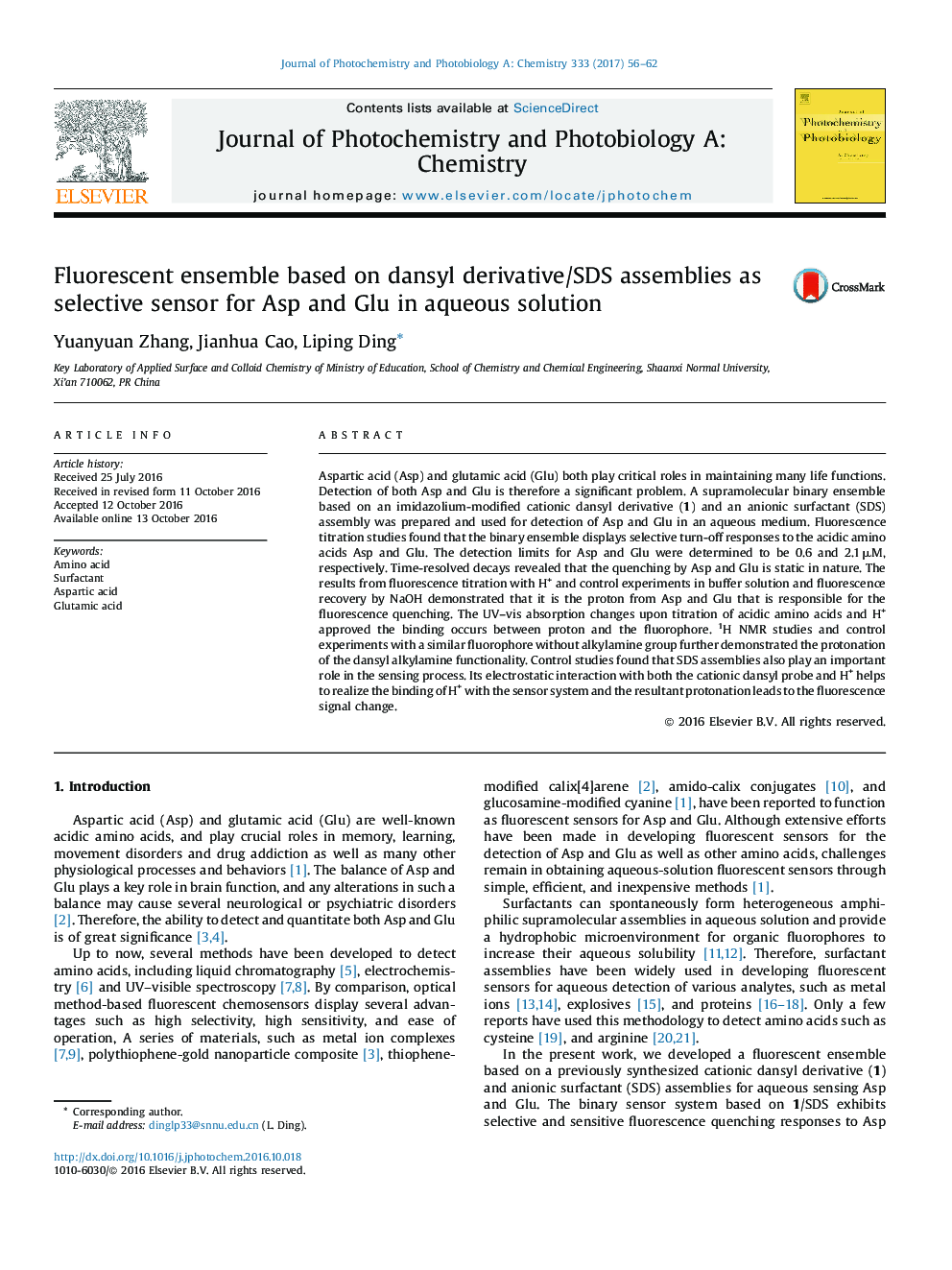| کد مقاله | کد نشریه | سال انتشار | مقاله انگلیسی | نسخه تمام متن |
|---|---|---|---|---|
| 6452457 | 1417607 | 2017 | 7 صفحه PDF | دانلود رایگان |

- A fluorescent ensemble based on dansyl derivative and SDS assemblies was prepared for sensing amino acids.
- The supramolecular sensor exhibits selective and fast turn-off responses to aspartic acid and glutamic acid.
- The binding of H+ released from acidic amino acids is accounting for the turn-off responses.
- SDS assemblies play an important role in attracting acidic amino acids to complex with sensor system.
Aspartic acid (Asp) and glutamic acid (Glu) both play critical roles in maintaining many life functions. Detection of both Asp and Glu is therefore a significant problem. A supramolecular binary ensemble based on an imidazolium-modified cationic dansyl derivative (1) and an anionic surfactant (SDS) assembly was prepared and used for detection of Asp and Glu in an aqueous medium. Fluorescence titration studies found that the binary ensemble displays selective turn-off responses to the acidic amino acids Asp and Glu. The detection limits for Asp and Glu were determined to be 0.6 and 2.1 μM, respectively. Time-resolved decays revealed that the quenching by Asp and Glu is static in nature. The results from fluorescence titration with H+ and control experiments in buffer solution and fluorescence recovery by NaOH demonstrated that it is the proton from Asp and Glu that is responsible for the fluorescence quenching. The UV-vis absorption changes upon titration of acidic amino acids and H+ approved the binding occurs between proton and the fluorophore. 1H NMR studies and control experiments with a similar fluorophore without alkylamine group further demonstrated the protonation of the dansyl alkylamine functionality. Control studies found that SDS assemblies also play an important role in the sensing process. Its electrostatic interaction with both the cationic dansyl probe and H+ helps to realize the binding of H+ with the sensor system and the resultant protonation leads to the fluorescence signal change.
164
Journal: Journal of Photochemistry and Photobiology A: Chemistry - Volume 333, 15 January 2017, Pages 56-62